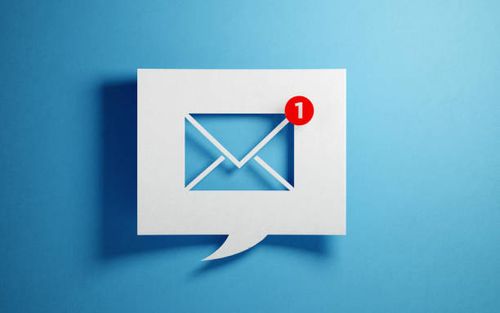Are your emails failing to reach their intended recipients? Many businesses run into this problem, as poor email deliverability can be caused by a variety of factors. If you want to tackle it head-on and improve the potential of your emails hitting the inboxes of your intended recipients, then this blog post is for you! Here, we’ll explore exactly what email deliverability is, why it matters, and how you can take steps to ensure that improve your email deliverability.
Email deliverability refers to the success rate of delivering emails to the intended recipient's inbox. It is a measure of how well an email message is able to bypass spam filters and reach the intended recipient. Factors that can impact email deliverability include the sender's reputation, the quality of the email content, and the technical configuration of the sending server.
To improve email deliverability, it is important to use best practices when sending emails, such as obtaining explicit permission from recipients before sending them emails, using a double opt-in process, and following guidelines for spam-free content. It is also important to maintain a good reputation as a sender by following email authentication protocols and keeping the sending server properly configured.
So if you're looking for actionable tips on improving email deliverability in order to guide more success with digital marketing efforts - read on!
Maintain the technical aspects of your email

Check email server and DNS configuration
Checking the email server and DNS configuration is an important step in improving email deliverability. If these are not set up correctly, it can cause issues with sending and receiving emails.
To check the email server configuration, you will need to access the server settings. This is typically done through the control panel provided by your hosting provider or through the server itself if you are running your own email server. Once you have access to the server settings, you will want to verify that the correct domain name is set up and that the server is properly configured to send and receive emails.
To check the DNS configuration, you will need to access the DNS records for your domain. This is typically done through the control panel provided by your domain registrar. Once you have access to the DNS records, you will want to verify that the correct MX (mail exchange) records are set up for your domain. These records tell other servers where to send emails for your domain. If the MX records are not set up correctly, it can cause issues with sending and receiving emails.
It is also a good idea to check that any other DNS records, such as SPF (Sender Policy Framework) and DKIM (DomainKeys Identified Mail), are set up correctly. These records help to authenticate your emails and improve deliverability.
If you are not familiar with email servers and DNS configurations, it is recommended that you seek the help of a qualified IT professional to ensure that everything is set up correctly.
Monitor bounces and blocks
Monitoring bounces and blocks is an important step in improving email deliverability. Bounces and blocks can occur when an email is not successfully delivered to the intended recipient.
A bounce occurs when an email is returned to the sender because it was unable to be delivered to the recipient's email server. There are two types of bounces: hard bounces and soft bounces. A hard bounce is a permanent failure to deliver an email, typically due to a non-existent email address or a closed account. A soft bounce is a temporary failure to deliver an email, typically due to a full inbox or a server issue.
A block occurs when an email is blocked by the recipient's email server or spam filter. This can happen if the email is flagged as spam or if the sender's IP address or domain has been blacklisted.
Monitoring bounces and blocks are important steps since they can help you identify and fix issues with your email deliverability. For example, if you notice a high rate of hard bounces, it may indicate that you have outdated or invalid email addresses on your list. If you notice a high rate of blocks, it may indicate that your emails are being flagged as spam or that your IP address or domain has been blacklisted.
To monitor bounces and blocks, you can use tools provided by your email service provider or set up bounce and block monitoring yourself. It might also be a good idea to regularly check for bounces and blocks manually by sending test emails to yourself and to a small group of trusted recipients. This will help you identify any issues and take steps to fix them.
Use authentication protocols
Using authentication protocols is an important step in improving email deliverability, these protocols help to verify that an email was actually sent by the domain it claims to be sent from, and help to prevent email spoofing and phishing attacks.
There are several different authentication protocols that can be used, including:
- SPF (Sender Policy Framework): SPF is a DNS record that specifies which servers are authorized to send emails for a particular domain. When an email is received, the recipient's email server checks the SPF record to verify that the server the email was sent from is authorized to send emails for that domain.
- DKIM (DomainKeys Identified Mail): DKIM is an authentication method that uses a digital signature to verify that an email was not modified during transit. When an email is sent, a digital signature is added to the message header. When the email is received, the recipient's email server checks the signature to verify that the email was not modified during transit.
- DMARC (Domain-based Message Authentication, Reporting & Conformance): DMARC is a policy that allows the owner of a domain to specify which authentication methods are used to send emails from their domain. It also provides a mechanism for receiving reports about emails that pass or fail DMARC evaluation.
Using these authentication protocols can help to improve the deliverability of your emails by showing recipient servers that your emails are legitimate and not spam or phishing attempts. It is recommended to set up and use these protocols if your email service provider supports them.
2. Improve email content and formatting

Use a clear and descriptive subject line
Using a clear and descriptive subject line is an important aspect of improving email deliverability. The subject line is the first thing that a recipient sees when they receive an email, and it plays a significant role in whether or not they will open and read the email.
A clear and descriptive subject line should accurately and concisely describe the content of the email. It should be specific and relevant to the recipient, and should not be misleading or spammy. A good subject line should be no more than 50 characters in length, as longer subject lines may be truncated by some email clients.
Some tips for crafting a clear and descriptive subject line include:
- Keep it short and to the point
- Use keywords that accurately describe the content of the email
- Avoid using spam trigger words or excessive punctuation
- Personalize the subject line by using the recipient's name or a relevant reference
- Use action verbs to encourage the recipient to take action
Using a clear and descriptive subject line can help to improve the deliverability of your emails by increasing the likelihood that the recipient will open and read the email. It can also help to build trust and engagement with your audience.
Use a professional email address
Using a professional email address is an important aspect of improving email deliverability. A professional email address helps to establish credibility and professionalism and can make a positive impression on the recipient.
A professional email address should be based on your domain name and should be easy to remember and spell. For example, if your name is John Smith and you own the domain example.com, a good professional email address might be [email protected].
Using a professional email address can help to improve the deliverability of your emails by establishing credibility and professionalism. It can also help to build trust and engagement with your audience.
Avoid spam trigger words and formatting
Avoiding spam trigger words and formatting is an important aspect of improving email deliverability. Spam trigger words are words or phrases that are commonly used in spam emails and can cause an email to be flagged as spam by the recipient's spam filter.
Some common spam trigger words include "Free", "Earn money", "Extra income", "Double your money", "Work from home"...etc
It is important to avoid using these words in the subject line and body of your emails, as they can significantly decrease the deliverability of your emails.
In addition to avoiding spam trigger words, it is also important to avoid using certain formatting techniques that can cause an email to be flagged as spam. These include using all caps or excessive punctuation, using a large font size or bolding, or including large images or excessive HTML formatting, implementing these formatting techniques can make your emails look spammy and may cause them to be flagged as spam by the recipient's spam filter.
So avoid using spammy words and formatting, you can help to improve the deliverability of your emails and avoid being flagged as spam. This can help to build trust and engagement with your audience.
Include an unsubscribe option
Including an unsubscribe option is an important aspect of improving email deliverability and maintaining a healthy email list. An unsubscribe option allows recipients to easily opt out of receiving future emails from you if they are no longer interested in receiving them.
Having an unsubscribe option is not only a best practice for email marketing, but it is also required by law in many countries. The CAN-SPAM Act in the United States, for example, requires that all commercial emails include an unsubscribe option.
To include an unsubscribe option in your emails, you can use an unsubscribe link or a mail-to link that allows the recipient to send an unsubscribe request by email. It is important to make the unsubscribe option easy to find and use, and to honor all unsubscribe requests promptly.
Including an unsubscribe option can help to improve the deliverability of your emails by reducing the number of bounces and complaints. It can also help to maintain a healthy email list by removing inactive or unengaged subscribers. This can ultimately improve the effectiveness of your email marketing efforts and help to build trust and engagement with your audience.
3. Build and maintain a healthy email list

Obtain explicit consent before adding someone to your email list
Obtaining explicit consent before adding someone to your email list is an important aspect of improving email deliverability and maintaining a healthy email list. Explicit consent means that the person has clearly and unambiguously agreed to receive emails from you.
There are several ways to obtain explicit consent, including:
- Having the person opt-in to receive emails through a sign-up form on your website or blog;
- Having the person provide their email address and consent during the checkout process on an e-commerce website;
- Having the person provide their email address and consent in person at an event or trade show;
It is important to clearly communicate the purpose of your email list and the types of emails that the person can expect, you should also provide an easy way for the person to opt out of receiving your emails at any time.
Obtaining explicit consent is not only a best practice for email marketing, but it is also required by law in many countries. The General Data Protection Regulation (GDPR) in the European Union, for example, requires that companies obtain explicit consent before collecting and using personal data for marketing purposes.
Obtaining explicit consent can help to improve the deliverability of your emails by reducing the number of bounces and complaints. It can also help to maintain a healthy email list by ensuring that you are only sending emails to people who are interested in receiving them. This can ultimately improve the effectiveness of your email marketing efforts and help to build trust and engagement with your audience.
Regularly clean and segment your list
Regularly cleaning and segmenting your email list is an important aspect of improving email deliverability and maintaining a healthy email list. Cleaning your email list involves removing inactive or unengaged subscribers while segmenting your list involves dividing it into smaller groups based on common characteristics or interests.
There are several reasons why it is important to clean and segment your email list:
- Inactive or unengaged subscribers can decrease the deliverability of your emails by increasing the number of bounces and complaints. Removing these subscribers can help to improve the overall health of your email list.
- Segmenting your email list allows you to send more targeted and relevant emails to your subscribers. This can increase the engagement and effectiveness of your email marketing efforts.
- Segmenting your email list can also help to improve the deliverability of your emails by allowing you to send emails to smaller, more targeted groups. This can decrease the likelihood of your emails being flagged as spam.
To clean and segment your email list, you can use an email checker or do it manually. To clean your list, you can remove inactive or unengaged subscribers by using data such as the last time they opened or clicked on an email, or by using a re-engagement campaign to encourage them to stay on your list. To segment your list, you can use data such as demographics, location, or interests to create smaller, more targeted groups.
Regularly cleaning and segmenting your email list can help to improve the deliverability of your emails and increase the effectiveness of your email marketing efforts. It can also help to build trust and engagement with your audience.
Avoid purchasing or renting email lists
Avoiding purchasing or renting email lists is an important aspect of improving email deliverability and maintaining a healthy email list. Email lists that are purchased or rented from third parties are often outdated, inaccurate, or spammy, and can significantly decrease the deliverability of your emails.
There are several reasons why you should avoid purchasing or renting email lists:
- The people on these lists may not have given explicit consent to receive emails from you, which can result in a high number of bounces and complaints.
- The emails on these lists may be outdated or incorrect, which can result in a high number of hard bounces.
- The emails on these lists may be spammy or of poor quality, which can result in a high number of spam complaints and a decrease in deliverability.
- Using purchased or rented email lists can also damage your reputation and credibility as a sender.
To avoid purchasing or renting email lists, you should focus on building your own email list organically through opt-in forms on your website or blog, or through in-person events or trade shows. This will ensure that you are only sending emails to people who have given explicit consent to receive them and are interested in your content.
Avoiding purchased or rented email lists can help to improve the deliverability of your emails and increase the effectiveness of your email marketing efforts. It can also help to build trust and engagement with your audience.
4. Engage with your audience

Encourage subscribers to add your email address to their contact list
Encouraging subscribers to add your email address to their contact list is an important aspect of improving email deliverability. Adding an email address to a contact list can help to ensure that your emails are delivered to the recipient's inbox and are not mistakenly flagged as spam.
There are several ways to encourage subscribers to add your email address to their contact list:
- Include a note in your email asking the recipient to add your email address to their contact list. You can also provide instructions on how to do this.
- Include a link in your email that allows the recipient to add your email address to their contact list with one click.
- Include a P.S. at the end of your email reminding the recipient to add your email address to their contact list.
It is important to be clear and concise when asking subscribers to add your email address to their contact list. You should also make it easy for them to do so by providing clear instructions and a convenient method.
Encouraging subscribers to add your email address to their contact list can help to improve the deliverability of your emails and increase the engagement and effectiveness of your email marketing efforts. It can also help to build trust and credibility with your audience.
Respond promptly to unsubscribe requests
when someone on your list opts out, responding promptly to unsubscribe requests is an important aspect of improving email deliverability and maintaining a healthy email list. Unsubscribe requests are a clear indication that the recipient is no longer interested in receiving emails from you and they should be honored as soon as possible.
There are several ways to respond to unsubscribe requests:
- Include an unsubscribe link in your emails that allows the recipient to opt-out with one click.
- Include a mail to link your emails that allows the recipient to send an unsubscribe request by email.
- Provide instructions in your emails on how the recipient can unsubscribe by emailing a specific address or by contacting you directly.
It is important to make the unsubscribe process easy and convenient for the recipient. You should also honor all unsubscribe requests promptly, ideally within a few days of receiving the request.
Responding promptly to unsubscribe requests can help to improve the deliverability of your emails and maintain a healthy email list. It can also help to build trust and credibility with your audience by showing that you respect their preferences and are willing to honor their requests.
Regularly send valuable and relevant content
Regularly sending valuable and relevant content is an important aspect of improving email deliverability and maintaining a healthy email list. Sending valuable and relevant content can help to increase the engagement and effectiveness of your email marketing efforts, and can also help to build trust and credibility with your audience.
To send valuable and relevant content, you should:
- Clearly define your target audience and what they are interested in
- Create a content calendar that outlines the types of content you will send and when you will send it
- Research and create content that is valuable and relevant to your audience
- Personalize your emails by using the recipient's name or other relevant information
- Test different types of content to see what works best for your audience
It is important to regularly send valuable and relevant content to your email list, as sending emails too infrequently or sending irrelevant content can lead to a high rate of unsubscribes or spam complaints.
Regularly sending valuable and relevant content can help to improve the deliverability of your emails and increase the effectiveness of your email marketing efforts. It can also help to build trust and engagement with your audience.
5. Monitor and analyze your email deliverability
Use tools to track deliverability rates
Using tools to track deliverability rates is an important aspect of improving email deliverability. Deliverability rates refer to the percentage of emails that are successfully delivered to the recipient's inbox.
There are several tools that you can use to track deliverability rates, including:
- Email service provider tools: Many email service providers offer tools that allow you to track deliverability rates for your emails. These tools typically provide data on the number of emails that were delivered, bounced, blocked, or marked as spam.
- Deliverability monitoring tools: There are also specialized deliverability monitoring tools that can provide more detailed data on deliverability rates. These tools often allow you to track deliverability rates for specific domains or IP addresses and can provide data on factors that may be affecting deliverability, such as blacklists or spam filters.
Using these tools can help you to identify any issues with your email deliverability and take steps to fix them. It is a good idea to regularly check your deliverability rates and compare them to industry benchmarks to ensure that you are maintaining a healthy email list.
Using tools to track deliverability rates can help to improve the deliverability of your emails and increase the effectiveness of your email marketing efforts. It can also help to build trust and engagement with your audience.
Analyze data to identify areas for improvement
Analyzing data to identify areas for improvement is an important aspect of improving email deliverability. There are several types of data that you can analyze to identify areas for improvement, including:
- Deliverability rates: Analyzing deliverability rates can help you to identify any issues that may be affecting the deliverability of your emails. You can use tools to track deliverability rates and compare them to industry benchmarks to identify any areas for improvement.
- Email metrics: Analyzing email metrics such as open rates, click-through rates, and conversion rates can help you to understand how your emails are performing and identify areas for improvement. For example, if your open rates are low, you may want to consider improving your subject lines or segmenting your email list.
- Subscriber data: Analyzing subscriber data such as demographics, location, and interests can help you to understand your audience better and create more targeted and relevant emails.
- User feedback: Gathering and analyzing user feedback can also help you to identify areas for improvement. You can use surveys, polls, or other methods to gather feedback from your subscribers and use this data to identify areas for improvement.
Analyzing data to identify areas for improvement can help to improve the deliverability of your emails and increase the effectiveness of your email marketing efforts. It can also help to build trust and engagement with your audience.
Conclusion
Email deliverability is the ability of an email to reach the recipient's inbox. Ensuring that your emails are delivered to the recipient's inbox is important for several reasons:
- Improved reach: If your emails are not delivered to the recipient's inbox, they will not be seen by the recipient. This can significantly reduce the reach of your emails and the effectiveness of your email marketing efforts.
- Maintaining a healthy email list: If your emails are frequently flagged as spam or bounced, it can lead to a high rate of unsubscribes or spam complaints, which can damage the health of your email list.
- Building trust and credibility: If your emails are not delivered to the recipient's inbox, it can damage your reputation and credibility as a sender. Ensuring that your emails are delivered to the recipient's inbox can help to build trust and credibility with your audience.
If you want to improve the deliverability of your emails and increase the effectiveness of your email marketing efforts, it is important to take action and implement the steps outlined above so you can improve the deliverability of your emails and increase the effectiveness of your email marketing efforts which will ultimately help to build trust and engagement with your audience.

